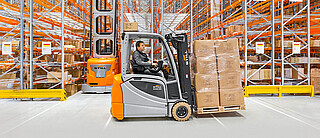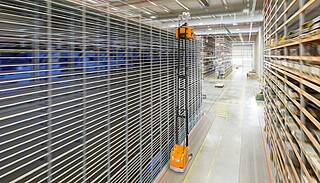3PL under pressure: Logistics service providers need flexible solutions

In an industry in which every penny counts for logistics orders and many customers only sign two-year contracts, logistics service providers themselves need strong partners who can provide them with a fleet that is as flexible as possible and support them with user-friendly software and effective automation.
"Logistics? Works for us! Thanks to 3PL". Companies that use third-party logistics (3PL) - that is, outsource their entire logistics operations to service providers - rely on flawless processes. Yet making this work in the face of increasing cost and time pressures and a persistent shortage of skilled labour remains a major challenge and business risk for logistics service providers.

Skilled labour shortage: Fleet without drivers?
So, you have a modern and flexible fleet, but where are the drivers? Logistics service providers need to be prepared for the fact that the shortage of skilled labour will not only continue but will increase as many experienced warehouse logistics specialists and forklift drivers retire in the coming years. This makes it all the more important not to lose employees to competitors, but to retain them in the company by offering attractive working conditions. This includes ergonomically designed, individually adaptable industrial trucks with a high level of operating comfort to minimise physical strain, as well as intuitive software and smart safety and assistance systems.

Assistance systems are also becoming all the more important when logistics service providers have to work with less qualified staff due to the shortage of skilled labour. Where there is a lack of experience and possibly also language skills, smart technology reduces the risk of errors and accidents. The 3PL sector is already looking for intelligent solutions to handle peaks in demand with fewer staff and to fulfil logistics assignments for a wide range of goods and batch sizes.
This can be achieved with greater efficiency – of course! But so that this magic word does not go up in smoke, STILL presents tangible solutions for increasing efficiency in the 3PL whitepaper and encourages logistics service providers to (partially) automate. This investment is worthwhile even for logistics service providers with very short contract terms if they identify processes that are similar for many customers. One example is the transport of empty pallets, which can be safely handled by automated guided vehicles (AGVs).
Ever higher – but safe!
Of course, efficiency must never come at the expense of safety, and this is especially true in warehouses with very high racking. Logistics service providers should only use trucks designed for the relevant lift heights and, where possible, equipped with stability monitoring systems. These enable fast, accurate and safe storage and retrieval at height.

Assisted vertical picking
The trend in order picking also favours space-saving vertical storage. This is an additional challenge at the most complex stage of the logistics chain, where there is still limited scope for automation. Product variety and small batch sizes, as well as long distances and high time pressure, place an enormous burden on order pickers. Vertical order pickers and digital process optimisation make their work easier - even on two levels
Comments
No comments
Subscribe to our blog!
As soon as a new article is published, we will notify you! You can unsubscribe at anytime.

Leave a comment